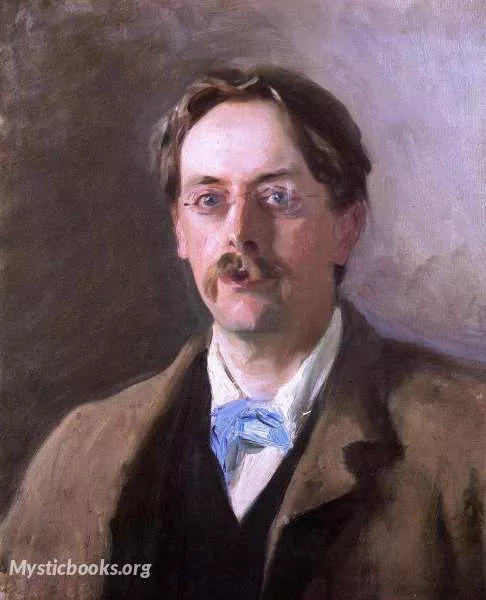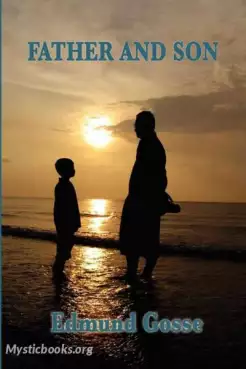
Timeline
Title
Country/Nationality
Edmond Gosse
Sir Edmund William Gosse was an English poet, author and critic. He was strictly brought up in a small Protestant sect, the Plymouth Brethren, but broke away sharply from that faith. His account of his childhood in the book Father and Son has been described as the first psychological biography.
His friendship with the sculptor Hamo Thornycroft inspired a successful career as a historian of late-Victorian sculpture. His translations of Henrik Ibsen helped to promote that playwright in England, and he encouraged the careers of W. B. Yeats and James Joyce. He also lectured in English literature at Cambridge University.
Gosse was the son of Philip Henry Gosse and Emily Bowes. His father was a naturalist and his mother an illustrator who published a number of books of poetry. Both were deeply committed to a small Protestant sect, the Plymouth Brethren. His childhood was initially happy as they spent their summers in Devon where his father was developing the ideas which gave rise to the craze for the marine aquarium. After his mother died of breast cancer when he was eight and they moved to Devon, his life with his father became increasingly strained by his father's expectations that he should follow in his religious tradition. Gosse was sent to a boarding school where he began to develop his own interests in literature. His father re-married in 1860 the deeply religious Quaker spinster Eliza Brightwen (1813–1900), whose brother Thomas tried to encourage Edmund to become a banker. He later gave an account of his childhood in the book Father and Son which has been described as the first psychological biography. At the age of 18 and working in the British Museum in London, he broke away from his father's influence in a dramatic coming of age.
Gosse started his career as assistant librarian at the British Museum from 1867 alongside the songwriter Theo Marzials, a post which Charles Kingsley helped his father obtain for him. An early book of poetry published with a friend John Arthur Blaikie gave him an introduction to the Pre-Raphaelite Brotherhood. Trips to Denmark and Norway in 1872–74, where he visited Hans Christian Andersen and Frederik Paludan-Müller, led to publishing success with reviews of Henrik Ibsen and Bjørnstjerne Bjørnson in the Cornhill Magazine. He was soon reviewing Scandinavian literature in a variety of publications. He became acquainted with Alfred, Lord Tennyson and friends with Robert Browning, Algernon Charles Swinburne, Thomas Hardy and Henry James.
In the meantime, he published his first solo volume of poetry, On Viol and Flute (1873) and a work of criticism, Studies in the Literature of Northern Europe (1879). Gosse and Robert Louis Stevenson first met while teenagers, and after 1879, when Stevenson came to London on occasion, he would stay with Gosse and his family. In 1875 Gosse became a translator at the Board of Trade, a post which he held until 1904 and gave him time for his writing and enabled him to marry and start a family.
From 1884 to 1890, Gosse lectured in English literature at Trinity College, Cambridge, despite his own lack of academic qualifications. Cambridge University gave him an honorary MA in 1886, and Trinity College formally admitted him as a member, 'by order of the Council', in 1889. He made a successful American lecture tour in 1884 and was much in demand as a speaker and on committees as well as publishing a string of critical works as well as poetry and histories.
He became, in the 1880s, one of the most important art critics dealing with sculpture (writing mainly for the Saturday Review) with an interest spurred on by his intimate friendship with the sculptor Hamo Thornycroft. Gosse would eventually write the first history of the renaissance of late-Victorian sculpture in 1894 in a four-part series for The Art Journal, dubbing the movement the New Sculpture.
Gosse married Ellen Epps, a young painter in the Pre-Raphaelite circle, who was the daughter of George Napoleon Epps. Though she was initially determined to pursue her art, she succumbed to his determined courting and they married in August 1875, with a reception at the house of Lawrence Alma-Tadema (her brother-in-law) and visiting Gosse's parents (who did not attend the registry office wedding) at the end of their honeymoon in Devon and Cornwall. She continued to paint and wrote stories and reviews for various publications. In 1907, she inherited a sizeable fortune from her uncle, James Epps (the brother of John Epps and who had made his fortune in cocoa).
Theirs was a marriage lasting more than 50 years and they had three children, Emily Teresa (b. 1877), Philip Henry George (1879–1959) who became a physician (but is probably best known as the author of The Pirates' Who's Who (1924)) and Laura Sylvia (1881-1968), who became a well-known painter.
Books by Edmond Gosse

Father and Son
Father and Son is a memoir by poet and critic Edmund Gosse, which he subtitled "a study of two temperaments." Edmund had previously published a biography of his father, originally published anonymously. The book describes Edmund's early years in an e...